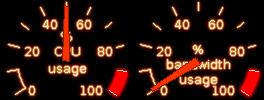| Home Network Graphics Programming Misc System Help out Distributions specific contact interesting sites manpages tools FAQ Sitemap Imprint poll results Last additions: using iotop to find disk usage hogs using iotop to find disk usage hogs words:887 views:202915 userrating:average rating: 1.7 (102 votes) (1=very good 6=terrible) May 25th. 2007: Words why adblockers are bad486 Views254160 Workaround and fixes for the current Core Dump Handling vulnerability affected kernels Workaround and fixes for the current Core Dump Handling vulnerability affected kernels words:161 views:143343 userrating:average rating: 1.4 (42 votes) (1=very good 6=terrible) April, 26th. 2006: Words New subdomain: toolsntoys.linuxhowtos.org38 Views103125 How to force a check of the file systems How to force a check of the file systems words:179 views:34729 userrating:average rating: 1.4 (62 votes) (1=very good 6=terrible) Oct, 18th. 2005: Words New features online: interactive search function34 Views56905 Sep, 5th. 2005: Words New website design online51 Views44816 Aug, 27th 2005: Words Existing articles can be edited by anyone now.134 Views12255 | /proc/stat explainedVarious pieces of information about kernel activity are available in the/proc/stat file. All of the numbers reported in this file are aggregates since the system first booted. For a quick look, simply cat the file: > cat /proc/stat The very first "cpu" line aggregates the numbers in all of the other "cpuN" lines. These numbers identify the amount of time the CPU has spent performing different kinds of work. Time units are in USER_HZ or Jiffies (typically hundredths of a second). The meanings of the columns are as follows, from left to right:
The "intr" line gives counts of interrupts serviced since boot time, for each
copied from the kernel documentation of the /proc filesystem Note: On my 2.6.18 kernel, cpu lines have 8 numeric fields, not 7. Note: Note2: rate this article: current rating: average rating: 1.6 (2243 votes) (1=very good 6=terrible) Your rating: back |

 |
|  |
| 
- Powered by LeopardCMS -
Copyright 2004 S&P Softwaredesign
Valid XHTML1.0 : Valid CSS : Level Triple-A Conformance to Web Content Accessibility Guidelines 1.0
- Powered by LeopardCMS -
- Copyright and legal notices -
Time to create this page: 59.5 ms
